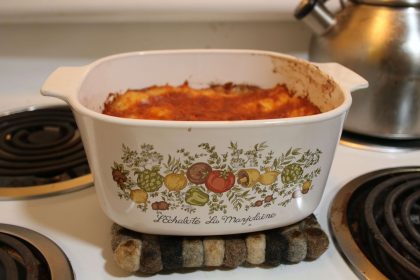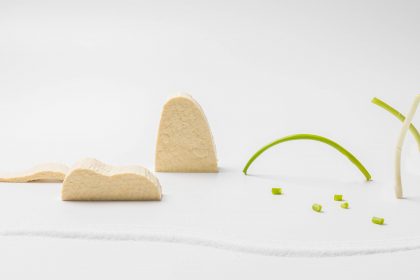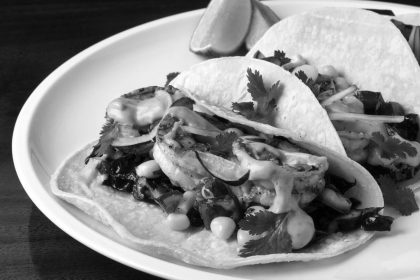Wondering whether you can replace milk with coconut milk in your cake recipe? As an avid baker myself, I know the importance of getting the right ingredients for the perfect bake. In short, the answer is yes, you can substitute coconut milk for milk in your cake recipe. However, there are a few considerations you should keep in mind before making the switch.
- A Brief Overview of Coconut Milk
- What Happens When You Use Coconut Milk Instead of Milk in Cake?
- How to Use Coconut Milk in Cake Recipes
- Almond Milk
- Soy Milk
- Oat Milk
- Why You Should Try Using Coconut Milk in Your Cake Recipes
- Tips for Baking With Coconut Milk
- How to Store Coconut Milk for Future Baking
- Frequently Asked Questions about Using Coconut Milk in Cake
The first thing to note is that coconut milk has a distinct flavor and can alter the taste of the cake. If you’re making a cake where the flavor of coconut is desired, or where the other ingredients complement the taste of coconut, using coconut milk can be a great option. On the other hand, if you’re making a classic vanilla or chocolate cake, substituting milk with coconut milk might not give you the desired taste.
A Brief Overview of Coconut Milk
Coconut milk is a popular ingredient in many recipes, especially in Asian and Latin American cuisine. It is made by blending coconut meat with water and straining the mixture to obtain a creamy liquid. Coconut milk has a mild, sweet flavor and a creamy, rich texture, which makes it an ideal substitute for dairy milk in various dishes.
Coconut milk can be bought in cans or cartons in most grocery stores. Many brands offer both regular and light versions of coconut milk, with the latter having a lower fat and calorie content. Remember how many calories in McDonalds large fries? Some recipes call for using only the thick, creamy layer that separates at the top of the can, while others use the entire contents.
One of the main benefits of using coconut milk in cooking is its nutritional value. Coconut milk contains medium-chain fatty acids, which are believed to boost metabolism and provide quick energy to the body. It is also high in vitamins C, E, and B, as well as iron, potassium, and magnesium. Coconut milk is also lactose-free, making it a viable option for those who are lactose intolerant.
While coconut milk is a versatile ingredient, its use in baking can pose some challenges. Due to its high fat content, it can alter the texture and consistency of baked goods. However, this can be overcome by adjusting the amount of coconut milk used or by combining it with other dairy-free substitutes, such as almond milk.
Overall, coconut milk is a nutritious and delicious alternative to dairy milk in various dishes. Its unique flavor and versatility make it a popular choice among vegan and non-vegan cooks alike.
What Happens When You Use Coconut Milk Instead of Milk in Cake?
When it comes to baking, substituting ingredients can be a bit tricky. It’s common to run out of an ingredient and need to find a substitute at the last minute. Coconut milk is a popular alternative to milk in baking recipes for those who are allergic or intolerant to dairy products. In this section, I’ll explore what happens when you use coconut milk instead of regular milk in cake.
Texture and Consistency
Cake recipes that call for milk usually require a specific type of milk, such as whole milk, 2 percent, or skim milk. Each type of milk has a slightly different fat and protein content, which can affect the texture and consistency of the baked cake. Coconut milk is lower in protein than dairy milk, which can result in a softer and slightly denser cake. It can also lead to a slightly different taste due to the distinct flavor of coconut.
Moisture Content
Coconut milk contains more fat than dairy milk, which can make the cake taste richer and more flavorful. This higher fat content can also affect the moisture level of the cake. Cakes made with coconut milk may be slightly more moist than those made with dairy milk, which can be beneficial for drier cake recipes like chocolate cake. However, it’s worth noting that this added moisture can also cause the cake to spoil faster if not stored properly.
Rising and Baking
In most cases, using coconut milk instead of dairy milk in a cake recipe should not affect the rising or baking process. However, it’s important to note that coconut milk may react differently with leavening agents such as baking soda or baking powder. If you’re making a recipe that calls for these ingredients, it’s a good idea to do a little research to see if there are any adjustments you need to make.
If you’re tacos lover, you should know how many calories in birria tacos.
In conclusion, substituting coconut milk for dairy milk in a cake recipe can produce a softer and slightly denser cake with a richer flavor. However, it’s important to keep in mind that the added moisture content can affect the cake’s shelf life. Additionally, if your recipe includes baking soda or baking powder, be sure to do a little research to ensure that the leavening agents will still work properly.
How to Use Coconut Milk in Cake Recipes
If you’re looking to switch things up in your baking routine, consider using coconut milk as a substitute for regular milk in your cake recipes. The result can be a deliciously moist and flavorful cake with a hint of coconut flavor.
Here are a few tips on how to use coconut milk in your cake recipes:
- Choose the right type of coconut milk. You can use either canned or carton coconut milk for baking, but be sure to look for full-fat coconut milk as it has a higher fat content and will provide a richer texture. Light coconut milk, on the other hand, has a more watery consistency and may not produce the same results.
- Replace milk with coconut milk. When substituting, use a 1:1 ratio. For example, if the recipe calls for 1 cup of milk, use 1 cup of coconut milk instead. Keep in mind that coconut milk has a slightly sweet and nutty flavor, so it may alter the taste of your cake slightly.
- Adjust other ingredients. Because coconut milk is thicker and richer than regular milk, you may need to adjust other ingredients in your recipe. For example, you may need to reduce the amount of butter or oil to prevent the cake from becoming too dense.
- Experiment with flavors. Coconut milk pairs well with a variety of flavors, including vanilla, chocolate, and citrus. Consider adding vanilla extract or lemon zest to enhance the coconut flavor or chocolate chips to add some texture.
When it comes to using coconut milk in cake recipes, there’s no one-size-fits-all answer. It may require some experimentation, but you may be pleasantly surprised by the results. So the next time you’re baking a cake, consider swapping out regular milk for coconut milk and see what delicious flavors come to life.
When it comes to baking, using milk alternatives can be a great way to add different flavors to your desserts or accommodate for dietary restrictions. While coconut milk can be a delicious substitute for regular milk in some recipes, there are other options to consider as well. Here are a few milk alternatives that you can experiment with in your next baking project:
Almond Milk
Almond milk is a popular milk alternative for those who are lactose intolerant or vegan. It has a nutty flavor that can complement both sweet and savory recipes. When using almond milk as a substitute for regular milk, keep in mind that it has a thinner consistency and might not thicken as much as regular milk does in custards or puddings.
Soy Milk
Soy milk is another common substitute for regular milk in baking. It has a more neutral flavor than almond milk and can be used in recipes where you don’t want the milk alternative to overpower the other ingredients. Like almond milk, soy milk has a thinner consistency than regular milk.
Oat Milk
Oat milk is a newer milk alternative that has gained popularity in recent years. It has a mild, slightly sweet flavor that can work well in baked goods. Oat milk also has a thicker consistency that is closer to regular milk than other alternatives. However, it can be a bit more expensive than other options.
These are just a few of the milk alternatives that you can experiment with in your baking. Keep in mind that each option has a slightly different flavor and consistency compared with regular milk, so it’s important to try them out in different recipes to see what works best. Always check the label on your milk alternative to make sure it’s unsweetened, as sweetened versions can throw off the balance of flavors in your baking. Also use only fresh milk and don’t let it out overnight like chicken.
Why You Should Try Using Coconut Milk in Your Cake Recipes
If you love baking cakes, you know how milk plays a crucial role in making soft, moist, and fluffy cakes. The conventional milk used in cakes is cow’s milk, but have you ever thought of using coconut milk instead? In this section, I’ll share with you why you should give coconut milk a try in your next cake recipe.
1. It Lends a Unique Flavor
Using coconut milk in your cake recipe infuses a deliciously unique flavor. It brings a subtle tropical vibe to your cake and tastes excellent if you’re making a coconut cake or anything with citrusy flavors. The natural sweetness of coconut milk can enhance the overall flavor too.
2. It’s Lactose-Free
Many people nowadays are lactose intolerant and have trouble digesting cow’s milk. By using coconut milk instead, you can make your cake recipe lactose-free, making it more accessible to everyone, including those with dietary restrictions.
3. It’s Deliciously Creamy
Coconut milk is rich, thick, and creamy, making your cake texture perfect. It works wonderfully well in cakes like chocolate cake, where you want a rich and creamy texture. The fats in coconut milk also help the cake stay moist, producing cakes that are light, soft, and fluffy.
4. It’s Nutritious
Coconut milk is a rich source of vitamins and minerals, including vitamin C, iron, calcium, and magnesium. Research has also suggested that coconut milk may help lower cholesterol levels and support heart health.
5. It’s Easy to Use
Coconut milk is widely available at most grocery stores and is easy to incorporate into your cake recipe. You can use it as a one-to-one replacement for regular milk without changing much of your recipe. And if you’re using canned coconut milk, make sure to stir it well before using it in your recipe.
In conclusion, experimenting with coconut milk in your cakes can lead to some fabulous creations. Its unique flavor and creamy texture make it a great alternative to regular milk. It’s also lactose-free, nutritious, and readily available, making it an excellent option for those with dietary restrictions. So why not give it a try in your next cake recipe and see how it turns out?
The Best Types of Cake to Use Coconut Milk In:
When it comes to utilizing coconut milk as a replacement for milk in cake recipes, some types of cakes might work better than others. After experimenting with various recipes, I have found that the following types of cakes work particularly well with coconut milk:
- Coconut Cake: It might seem obvious, but coconut milk is the perfect ingredient to enhance the coconut flavor in a coconut cake. Using coconut milk in the cake batter and frosting creates a rich and moist cake that is bursting with coconut flavor.
- Banana Cake: When using coconut milk in a banana cake recipe, it results in a delicious tropical twist on this classic cake. The subtle sweetness of the bananas compliments the coconut milk perfectly, creating a soft and moist cake.
- Chocolate Cake: Surprisingly, coconut milk works well in a chocolate cake recipe. It adds a rich and creamy texture to the cake, resulting in a moist and decadent dessert.
- Carrot Cake: Using coconut milk in a carrot cake recipe not only creates a delicious tropical twist, but it also adds a level of richness to the cake that is unparalleled. The coconut milk compliments the spices in a carrot cake perfectly, resulting in a perfectly moist dessert.
In conclusion, using coconut milk as a replacement for milk in cakes can work perfectly well, particularly with the types of cakes I have mentioned. So, if you’re looking to add a twist to your classic cake recipes, try swapping in coconut milk.
Tips for Baking With Coconut Milk
Are you ready to try baking with coconut milk? Here are a few tips to keep in mind:
- Consider the texture. Remember that coconut milk is thicker and creamier than regular milk, so it might affect the texture of your cake. If you’re using coconut milk as a substitute for regular milk, make sure to use the same amount by volume and adjust the recipe as needed.
- Be mindful of the flavor. Coconut milk has a distinctive flavor that might not work with every type of cake. Same as a low carb tea, consider the other flavors in your recipe and whether they’ll complement or clash with the coconut milk.
- Experiment with different types. There are several different types of coconut milk available, including full-fat, light, and even canned cream of coconut. Experiment with different types to find the one that works best for your recipe.
- Don’t overmix. When using coconut milk, it’s important not to overmix the batter. Coconut milk can become too thick and clumpy if it’s mixed too much, which can affect the texture of your cake.
- Add some sweetness. Coconut milk can be slightly less sweet than regular milk, so you might want to add a bit more sugar to your recipe to balance it out.
- Consider using coconut oil. If you want to enhance the coconut flavor even more, consider using coconut oil in place of butter or vegetable oil. This can add a rich, nutty flavor to your cake.
- Keep an eye on the baking time. Coconut milk can cause cakes to brown more quickly, so keep an eye on the baking time and adjust as needed. You might need to cover the cake with aluminum foil if it’s browning too quickly.
By following these tips, you can create delicious cakes and other treats using coconut milk. Happy baking!
How to Store Coconut Milk for Future Baking
When using coconut milk in baking, it’s important to know how to store it properly for future use. Here are some tips and tricks to keep your coconut milk fresh and ready for your next baking adventure.
- Use airtight containers: After opening a can of coconut milk, refer to the label for instructions on how long it can be stored in the refrigerator. Once opened, transfer the unused coconut milk into an airtight container to prevent it from spoiling quickly due to exposure to air. You can also freeze coconut milk in an airtight container for up to six months to extend its shelf life.
- Label and date the container: Always label and date the container before storing it. This helps you keep track of how long the coconut milk has been stored in the refrigerator or freezer and ensures you use it before it goes bad.
- Use ice cube trays to freeze small portions: Coconut milk can be frozen in small portions using ice cube trays, then transferred to freezer bags. This helps to prevent waste and ensures you have the right amount of coconut milk for your recipe.
- Shake well before using: When it’s time to use your stored coconut milk, give it a good shake or stir to ensure it’s fully mixed and free of any lumps.
Overall, these tips can help prolong the life of your coconut milk and ensure that it’s fresh and ready for your next baking adventure. With proper storage, you can use coconut milk as a delicious and healthy alternative to regular milk in all of your favorite baking recipes.
Frequently Asked Questions about Using Coconut Milk in Cake
Many people who love baking have often wondered whether they can substitute milk with coconut milk when making cakes. To help you make an informed decision, I’ve provided answers to some of the most frequently asked questions about using coconut milk in cake:
1. What is Coconut Milk?
Coconut milk is a liquid extracted from fresh coconut flesh. It’s thick and creamy and looks slightly opaque. Coconut milk has a rich, nutty, and slightly sweet flavour that complements different types of dishes. When substituting milk with coconut milk in a cake recipe, it’s essential to note that coconut milk has a stronger flavour that may influence the taste of the cake.
2. Can I use Coconut Milk instead of Milk in a Cake Recipe?
Yes. You can use coconut milk instead of milk in a cake recipe. However, you need to check the recipe to know the amount of milk required and use the same measurement of coconut milk. It’s also important to note that using coconut milk can make your cake denser and moister, which may not be desirable for certain types of cakes.
3. What Types of Cakes Work Best with Coconut Milk?
Cakes that have a tropical flavour, such as coconut cake, mango cake, and pineapple coconut cake, work best with coconut milk. Additionally, cakes that have a dense texture, such as pound cake, chocolate cake, and carrot cake, can also benefit from the use of coconut milk.
4. Can I use Light Coconut Milk Instead of Full-Fat Coconut Milk?
Yes. You can use light coconut milk instead of full-fat coconut milk when making cakes. However, it’s essential to note that light coconut milk has a thinner consistency and a less intense flavour compared to full-fat coconut milk. You may need to adjust the recipe to accommodate the difference in consistency.
5. Can I use Coconut Cream Instead of Coconut Milk?
Yes. You can use coconut cream instead of coconut milk. However, you’ll need to dilute the coconut cream with water to get the desired consistency. Mix one part coconut cream with one part water to get coconut milk consistency. This mixture can be used in the same quantity as milk in cake recipes.
I hope these questions and answers have helped you understand more about using coconut milk in cakes. Remember to experiment and have fun when baking with coconut milk.
When it comes to substituting coconut milk for regular milk in cake recipes, there are a few things to consider. However, from my personal experience and after conducting research, I can confidently say that yes, you can use coconut milk instead of milk in cakes.
Here are a few pointers to keep in mind when using coconut milk:
- Coconut milk is thicker and richer than regular milk, so it may alter the texture and flavor of your cake slightly. But this can also result in a moist and flavorful cake.
- If you’re substituting coconut milk in a recipe, use a 1:1 ratio. For example, if the recipe calls for 1 cup of milk, use 1 cup of coconut milk instead.
- Some people don’t like the taste of coconut, so if you’re making a cake for a crowd, it’s worth considering their preferences.
- Coconut milk is a great substitute for people who are lactose intolerant or vegan.
In conclusion, using coconut milk instead of milk in cakes is a viable option that can result in delicious and unique flavors. Just be aware of the potential changes in texture and taste, and feel free to experiment to find your perfect recipe!





